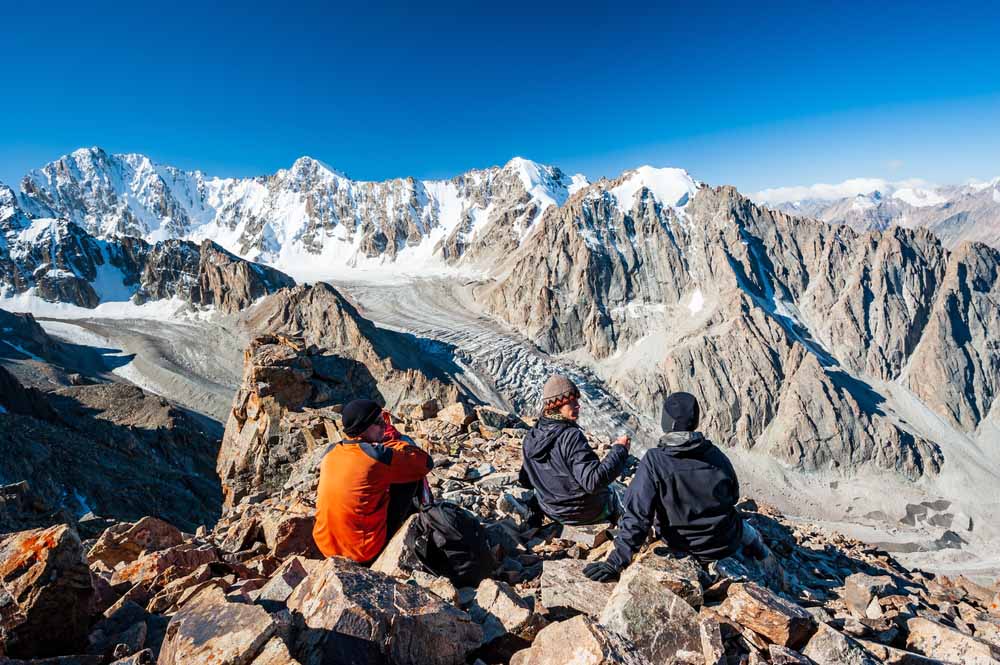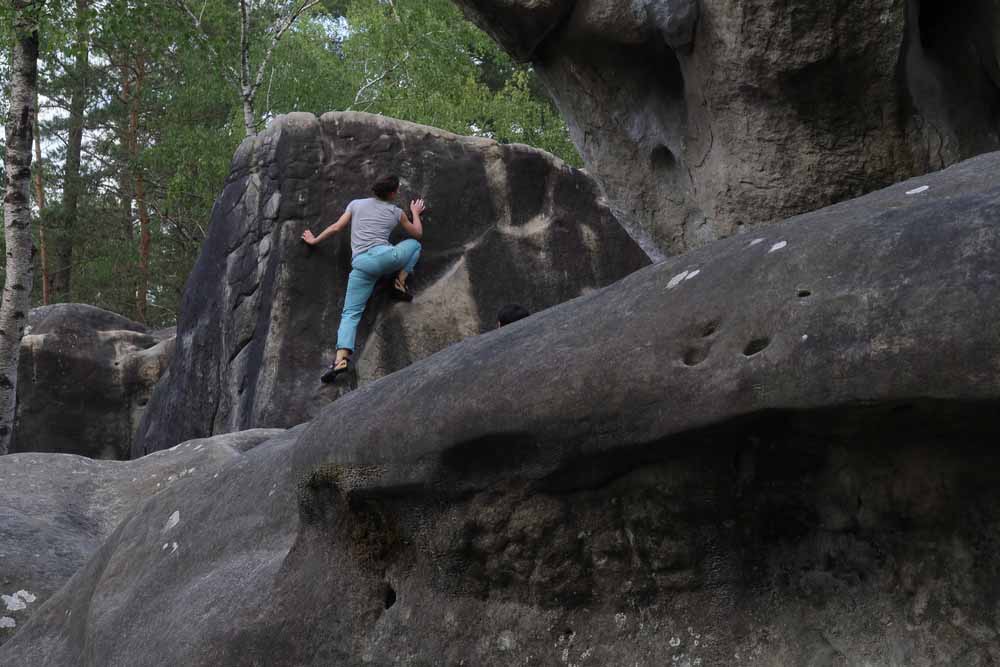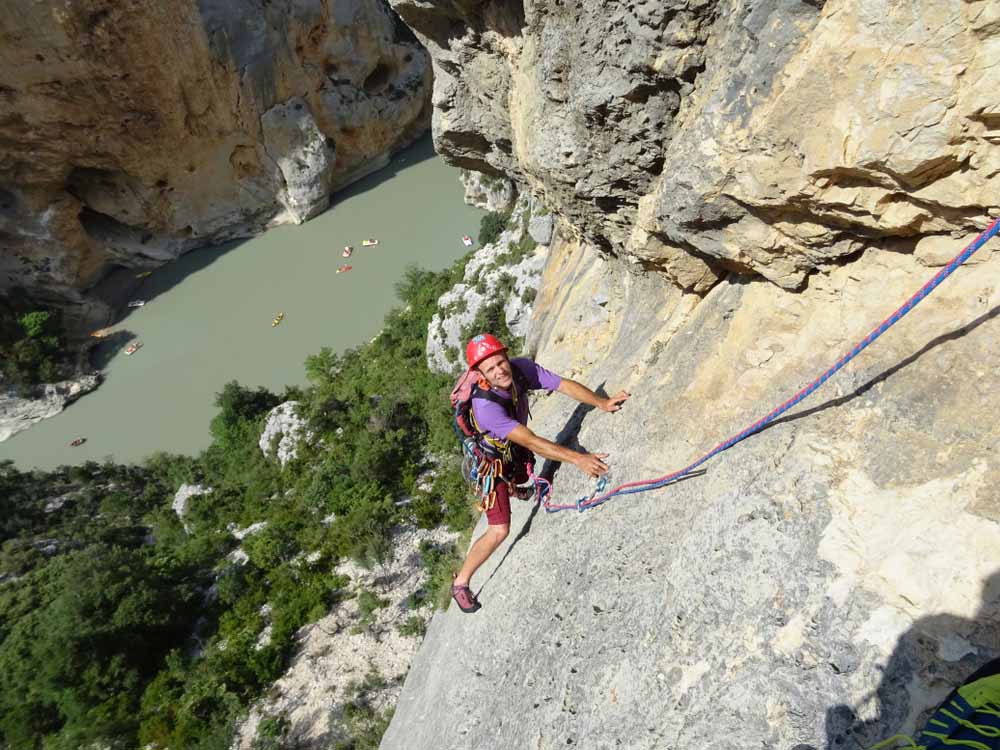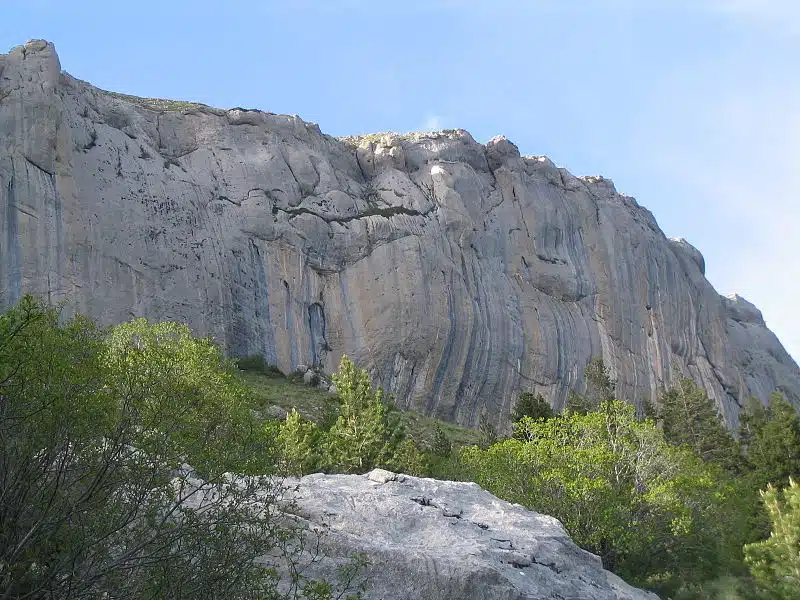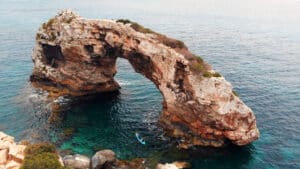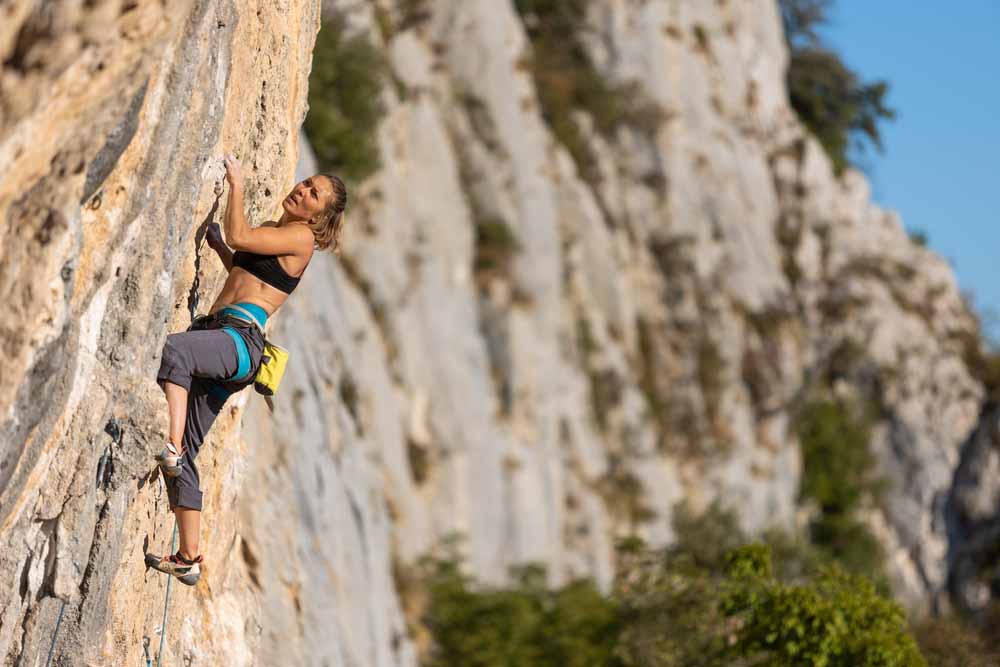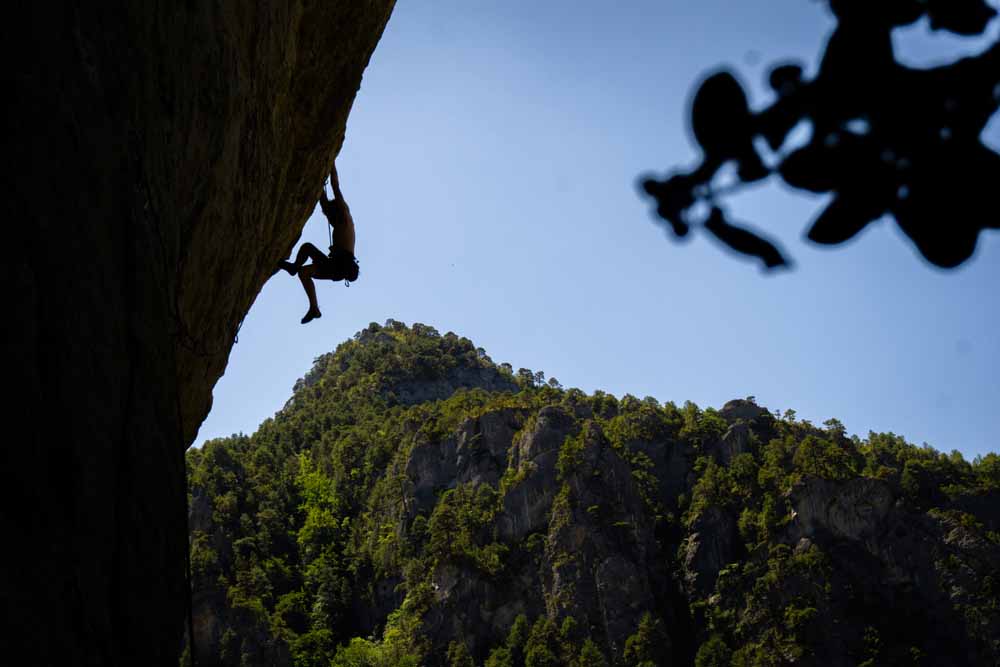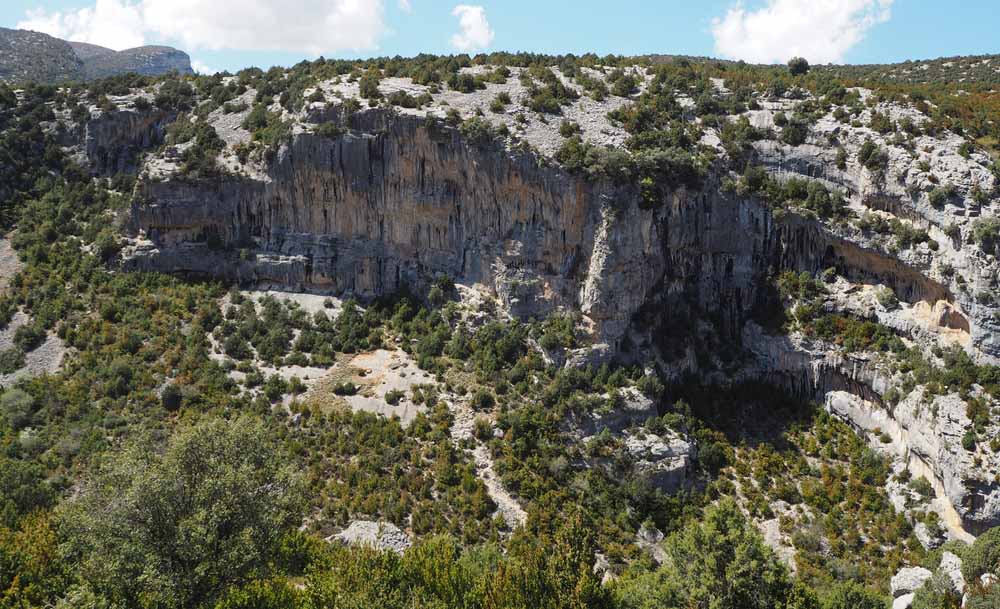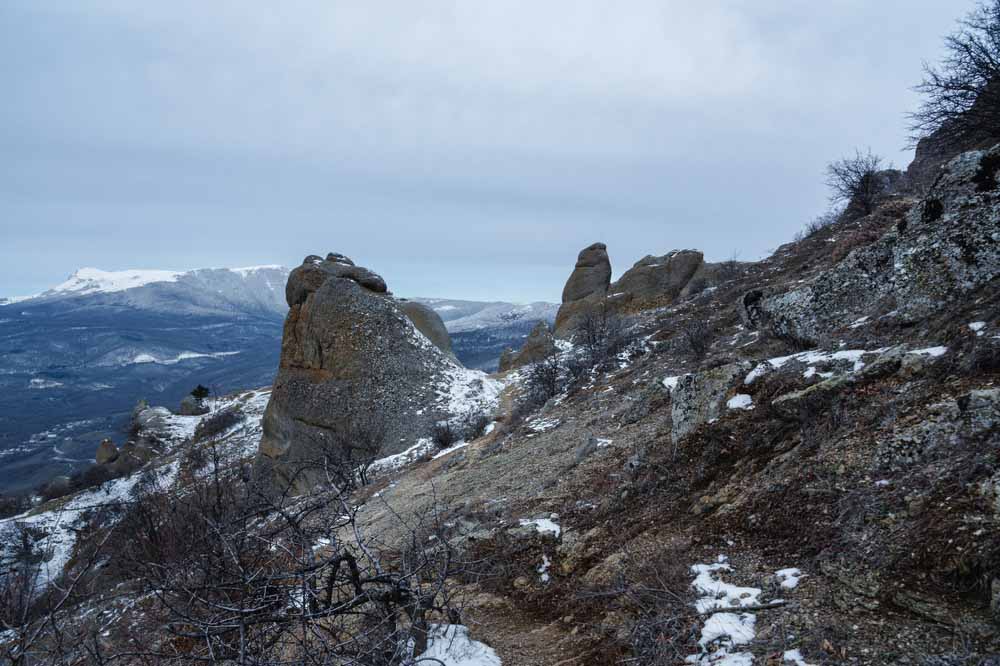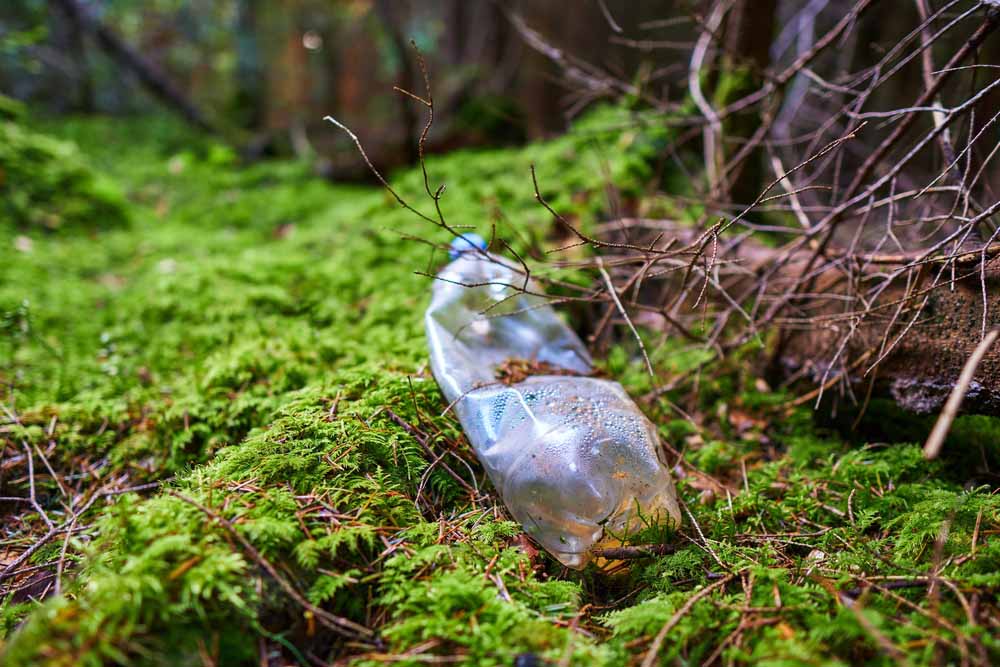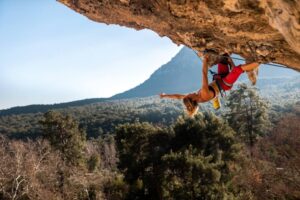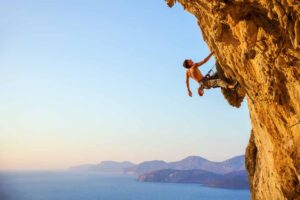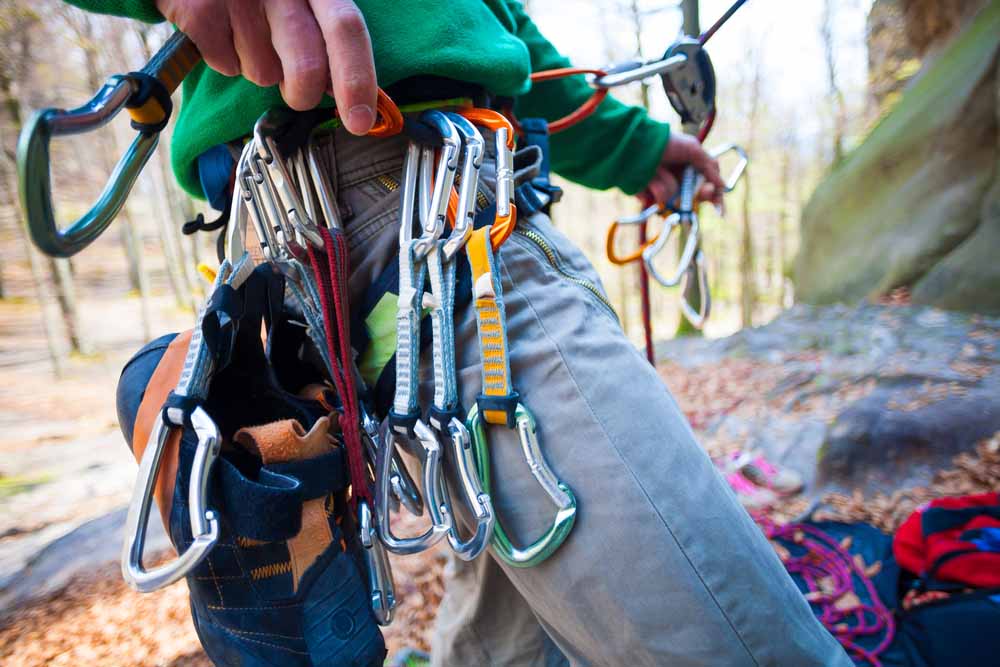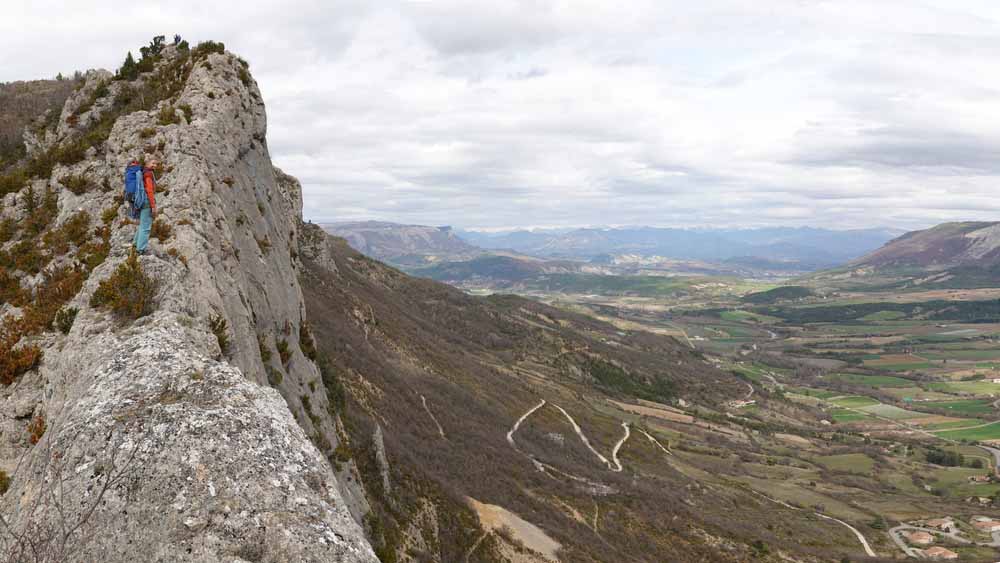The looming mountains, rocky outcrops, and boulder fields of France have been a bastion of European rock climbing since the late 1700s. As a result, many of the most impactful first ascents and strongest climbers in the world hail from within the country’s borders.
But you don’t have to be a climber with superhuman strength to enjoy rock climbing in France. France is a paradise for any type of rock climber– everyone from mountaineers who want to bag a summit in the Alps to climbers who dream of bouldering in the forests of Fontainebleau.
Keep reading if you are curious about rock climbing in France and want to learn more about some of the best climbing areas to visit while you explore the country.
A Brief History of French Rock Climbing
The country of France contains some of the most impressive mountain summits in Europe. That’s why the French Alps have been the center of European mountaineering, also known as alpinism, since the late 1700s.
But the rock in France wasn’t only responsible for growing the sport of alpinism. The outlying cliffs, gorges, and boulder fields littered around France have also contributed to the origins of modern-day bouldering and sport climbing.
French Alpinism
In the 18th century, there was an obsession with summiting the various peaks in the French Alps. In particular, adventurous scientists were curious about what new species of plants and animals could be found high up in the mountains. And whether or not the human body could survive the harsh conditions suspected at such high elevations.
Mont Blanc (4,807.71 meters above sea level), the highest peak in the Alps and Western Europe, was considered the crown jewel. So, in 1786, two men, Jacques Balmat, a geologist and crystal hunter, and Michel-Gabriel Paccard, a doctor, left the mountain town of Chamonix and successfully summited.
After Balmat and Paccard’s adventure, mountaineering in the French Alps continued to grow as a sport. For example, in 1808, Marie Paradis was the first female to climb Mont Blanc. And in 1823, the world-renowned Chamonix Guide Company was established.
More mountaineering from 1864 onward ushered in the “golden age” of mountaineering in the French Alps. During this time, alpinists from Europe came to France to summit virgin peaks like the Aiguille du Dru, Aiguille du Midi, and the Aiguille du Grépon.
French alpinism continued throughout the 1900s with bold first ascents. Every climbing season, there was a new development in French alpinism. However, the high mountains were not the only place in France where the sport of rock climbing was growing.
Bouldering in Fontainebleau
Some of the earliest climbing ascents in Fontainebleau were documented in the 1870s. At the time, alpinists from the Club Alpin Francais from Paris would climb on the boulders to stay fit for larger objectives in the Alps.
Later, in the 1930s, local legend Pierre Allain continued to develop climbs in the forests of Fontainebleau. After the Great World War, the 1950s were also a time of major development. In particular, two groups of “bleusard” climbers dominated the forest, the Club Académique de Cuvier and the Club Olympique de Billancourt.
However, despite all the development, the bouldering in Fontainebleau remained under the radar throughout the 1960s and 1970s. Therefore, it remained a training ground where local alpinists could train. That was until the 1980s.
Like other climbing destinations around Europe and the world, the 1980s proved to be the turning point in Fontainbleu’s climbing. The 1980s brought forth a new style and ethic of French bouldering where climbing for the sake of climbing and not reaching a summit was a worthy endeavor by itself.
Thanks to a new generation of climbers who wanted to push the limits of the sport and develop a rich climbing culture, Fontainebleau is now considered one of the best bouldering destinations in Europe, if not the world.
New-Age Sport Climbing in the Verdon Gorge
Prior to the 1960s, the Verdon Gorge was largely understood to be unclimbable. It was too big, too committing, and too difficult.
However, because of the sheer size of the walls and the amount of opportunity for new climbing, it became an objective of its own. In 1968, Francois Guillot accomplished the first ascent of Verdon’s first route, “La Demande.”
For the next ten years, the only routes up the canyon’s walls relied on cracks and traditional climbing ethics and equipment.
But in the second era of climbing in Verdon, between the late 1970s and early 1980s, climbers began to venture away from the cracks and onto the seemingly blank sections of the cliff.
Climbing the blank faces became possible thanks to the development of power drills and rap-bolting. Modern tools and equipment, like sport climbing bolts and updated climbing ethics, unlocked the previously unclimbable terrain of the Verdon Gorge and ushered in the origins of sport climbing in France.
The futuristic vision of the early route developers in the Verdon Gorge, specifically Bruno Clement, and the rapid pace at which they developed new routes and pushed the boundaries of the sport led to further development all around the country.
Popular Sport Climbing Areas in France
There is way too much rock climbing in France for one article. So, instead of trying to cover it all, I want to just focus on some of the most well-known areas for sport climbing.
Ceuse
Ceuse is a limestone mountain (2,016 meters above sea level) in the Hautes-Alpes department of France, outside the small towns of Gap and Sigoyer. The mountain first became popular after the Second World War when a ski resort was built on the north face.
However, rock climbers travel to Ceuse not for skiing but for impeccable rock. The southern end of the mountain contains a horseshoe-shaped limestone cliff called the Corniche de Céûse.
The Corniche features hundreds of bolted sport climbs. Unique blue and orange colors, a pocketed surface, and a unique variety of holds characterize the limestone rock. Most of the climbs are single-pitch routes ranging from 25 to 40 meters. However, there are some multi-pitch routes on the taller 200-meter sections of the cliff.
Routes range from 5c all the way to 9b+, making Ceuse the ideal location for experienced sport climbers. The world’s first benchmark 9a+ Biographie was bolted at Ceuse by Jean-Christophe Lafaille in 1989. Eventually, North American climber Chris Sharma freed the route in 2001 and German climber Alex Megos sent Bibliographie 9b+, in 2020.
The best time to visit Ceuse is between May and October. The peak season typically runs from July to August because the weather is warm and dry, with temps ranging from 15-25°C (59-77°F).
Buoux
The rock climbing at Buoux is located in a beautiful gorge split by the Aiguebrun River outside the small town of Apt in the Haute Provence of Southern France.
The climbing in Buoux first became popular in the 1980s when sport climbs were first developed by French first ascensionists. One of the most famous lines from the 80’s is La Rose et le Vampire, 8b, which was climbed by Antoine Le Menestrel in 1986. Le Menestrel’s route popularized the iconic “rose move,” which continues to be a subject of indoor route setting.
Nowadays, the limestone cliffs in Buoux continue to be a popular training ground for strong sport climbers. That’s because Buoux features amazing vertical and overhanging limestone and sandstone rock. The rock offers technical climbing on pocketed faces, roofs, and bulges, enduring overhangs and more pockets.
Buoux contains somewhere around 800 sport climbs. Most of the climbing is single-pitch, with routes up to 25 meters long. However, there are some multi-pitches on the taller 100-meter sections of the cliff also.
The best time to climb in Buoux is in the Spring and Fall. On the other hand, Buoux is too hot for climbing during the summer. However, it is possible to climb in Buoux during the winter if the weather cooperates and you get sunny, dry days.
Gorges du Tarn
Gorges du Tarn, also called “The Tarn” is one of France’s most popular sport climbing venues. That’s because the walls of the gorge are littered with amazing limestone routes. But the Tarn Gorge isn’t only popular for climbing.
The Gorges du Tarn has been a popular tourist destination since 1905, when the “routes des Gorges du Tarn” was built to allow better access to the longest and deepest sections of the gorge. As a result, the Tarn continues to be a popular destination for tourists, especially in the summer.
The Tarn Gorge is the perfect venue for long, single-pitch routes, some of which require a 70 or 80-meter rope. The climbing takes place on immaculate golden-streaked limestone walls. The rock is often overhanging and features tons of pockets and crimps.
Like the other sport climbing destinations in France, the ideal time to visit the Tarn Gorge is during the Spring or Fall. That’s when the weather is the driest, and the temperatures are the coolest. However, you can also climb in the Tarn Gorge during the summer because many of the walls are in the shade. Then, after a hot day of cragging, you can jump in the River Tarn.
St. Leger du Ventoux
St. Leger du Ventoux is in the south eastern region of the Provence Alpes Cote d’Azur in France. The cliffs are nestled along the base of the massif of Mount Ventoux (1,911 meters above sea level) in a quiet and quaint valley.
Compared to some other crags in France, the valley of St. Leger is extensive, and the area is more spread out. In addition, St. Leger is considered a “new school” crag in terms of its bolting, making it a relatively safe place to climb without major run-outs.
However, that does mean the climbing is easy. Most of the highest quality climbing starts at 7a/b, making this location ideal for experienced climbers.
The climbing is characterized by bouldery and sustained climbing on pockets, crimps, and tufas. Many of the routes are steep, and some are very overhanging.
The best time to visit the cliff of St. Leger du Ventoux is during the cooler months of spring and fall. However, it is also possible to climb in St. Leger during the summer because there is a lot of climbing on the North-facing side of the valley. Similarly, climbing during the winter is a viable option because the valley also contains sunny south-facing walls.
Planning a Climbing Trip in France
There is a lot to consider if you are planning a climbing trip to France. Here are some things to keep in mind as you develop your plans beforehand and travel in the country.
Consider the Season
Rock climbing is a seasonal sport. Meaning that some times of the year are better for climbing than others. So before you plan your trip, ensure that you are traveling during the ideal season so you can get the best weather possible for climbing.
But remember, if you are traveling during peak season, the crags will probably be busier. So if you want a quieter experience, consider visiting during the shoulder seasons. Or, visit during the off-season and hope for the best in terms of weather and conditions for climbing.
Minimize Your Impact
Many of the crags in France are located in one-of-a-kind, pristine wilderness areas. That’s why you should always try to minimize your impact and follow local etiquette.
For example, respect the local flora and fauna, stay on the trail, pick up after yourself, camp in designated zones, follow local climbing ethics, and respect local climbing ethics. In general, – treat the area like it’s your local crag and try to leave no trace.
Support Local Businesses
Rock climbers tend to prefer to travel on a budget. However, whenever possible, it’s always a good idea to support the local economy by trying our local restaurants, staying at logically-owned accommodations, and shopping at the local gear shop.
Ensure You Have the Correct Equipment
Every climbing area in France is different. Therefore, it’s important to ensure that you have the correct equipment for the type of terrain you want to climb.
For example, many of the routes in Ceuse and the Verdon Gorge are super tall. The routes are so tall that most local climbers climb with a 70 or 80-meter rope. So, depending on where you are accustomed to climbing, your 60-meter rope may not be good enough.
Hire a Local Guide
If you are ever in doubt about where to go, what to climb, how to get there, or if you can accomplish the objective– hire a climbing guide.
Climbing guides possess deep wells of knowledge not only about technical climbing skills but also about the local area they live and guide in.
Final Thoughts- Go Climb in France!
There are few better places for rock climbing than France. If you enjoy limestone and sandstone sport climbing or any climbing, then France should be high up on your bucket list of destinations.
Whether you want to summit a peak in the Alps outside of Chamonix or spend the spring months projecting a classic route in Ceuse, rock climbing in France has something to offer you.
Not to mention the mouth-watering wine and cheese!


